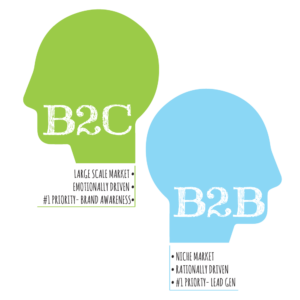On a typical Monday, my mail inboxes are flooded with notifications on the latest discounts on leading merchandise sold in popular e-Commerce apps. Dealers and sellers of both consumer products and services (B2B and B2C) have their own mobile apps through which they thrust promotional and crafty marketing messages.
At one point, I am confused and tempted to engage in buying or at least browsing through the e-commerce stores for products like clothing merchandise, kitchen equipment, cleaning services and raw materials that can be ordered in bulk! To distract myself, I Googled for the latest news on the booming app economy to find that mobile users’ daily in-app usage in mature markets accounts for at least two hours.
Which means people like us dedicate about ‘one month of a year’ browsing through mobile apps!
But why have B2B and B2C mobile apps become the new order of business for the millennial brands and customers?
The answer is the growing ubiquity of mobile devices and smartphones that has bolstered mobile activities across the world. In the business ecosystem, mobile apps play a dominant role in impacting sales volumes, customer relations, marketing activities, efficiency and speed at which business is conducted. From a customer’s viewpoint, mobile is a refreshing change from the outmoded methods by allowing anytime and anywhere buying of products and services.
In a nutshell, both the markets for B2B (business to business) and B2C (business to customers) apps are maturing but, the B2B segment is a little slow to keep with the competition of B2C apps. To understand what makes them different, read through the below pointers to understand the differentiation between B2B and B2C apps:
Primary Differences between B2B and B2C Apps:
B2B or business to business apps is mobile application platforms developed in the interest of businesses to simplify and streamline complex activities. Th B2B apps serve as productivity tools by managing business information, inventory, data mining, processing and data storage, compliance, evaluation of performance, generation of reports, etc.
A typical B2B app is created as per the needs of businesses for enhancing efficiency, organizational productivity, reporting, and profitability. These apps may be used by the employees, customers (mostly businesses) and multiple stakeholders like wholesalers, retailers, etc who engage with the business by downloading the apps or visiting the websites. The B2B apps can be accessed using login credentials or respective IDs or it can be strictly open only for employees to carry out day to day operations.
The UI/UX, navigation, layout, templates, dashboards, and call of actions button vary according to the nature of the business, products or solutions offered and can be customized as per requirements by approaching a custom app development services provider.
BCB or business to customer apps is a fairly interesting body of work of smartphone app development companies. The common B2C apps are the regular e-Commerce apps which have an array of features for display of products or services information, order placement, online purchases, notifications on promotional messages, discounts, etc. In short, B2C apps differ in B2B apps in terms of UI/UX design because they are mostly created to simplify customer’s journey in the apps to ensure they engage in buying and repurchase.
B2C apps spend frequently on enhancing the aesthetics, regular updates, and the addition of features that increase customer-centricity. As a result, most B2C applications are constantly under pressure to outdo rivals in terms of performance, responsiveness, loading speed, content development, content sharing and social media marketing.
Unlike B2B apps, the B2C apps can be downloaded from Google Play or iOS store and is available for any outsider who wishes to engage in online buying. Also, B2B apps do not necessarily require aggressive digital marketing that B2C apps adopt like gathering likes, shares, posts, comments, feedback, etc.
B2C applications are of three types:
- E-Commerce Applications: It is an online store of retailers and brands for selling products and services of various manufacturers, business, and brands. These apps sell consumer products to goods and services that are directed to end-users.
- Stand-alone Apps: These refer to an app created by a particular brand to increase sales by providing customers an additional digital channel for buying. It contains the same features and functionalities of an e-Commerce app except that it exclusively contains products or services of the brand alone.
- Mobile Loyalty Apps: Loyalty and reward apps are created to enable businesses to acquire new customers and avoid customer churn by providing attractive discounts and loyalty points on their engagements with the brands. These apps transform the customers’ loyalty and relations into profits for the businesses.
Although the B2B and B2C apps differ in usage, purpose, and features, the millennial buyers expect the same level of buying experience, personalization and digital conveniences. The B2B app market is predicted to reach 1.2 trillion by 2021 due to the changing B2B buyer demographics and businesses’ need to fully exploit digital tools for better revenue and sales.
Our advice to the B2B and B2C app users?
Well, don’t be too surprised to find a flurry of choices in your apps stores, the trend of mobile apps will organically experience hi-lows and their performance is ultimately dependent on the decision of the end-users!
What are your thoughts on this? We would love to hear from you.











